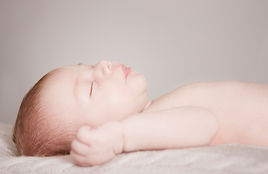

Infant Toddler Transitions
When transitioning to from being home with family to coming into a formal care setting there are several changes that occur in a short period of time for both families and children. These changes could result in changes in mood or behavior during the transitional period. During the infant toddler years (0-3) it could be common to see some separation anxiety when children first begin attending a program. This is due to their attachment with their primary caregiver and other familiar adults. As time progresses and your child spends more time in the program the transitions will become easier as they form relationships with their caregivers in the classroom.
Helpful Hints:
-
In the first few weeks of your transition create a drop off and pick up ritual. This is a routine parent, and a caregiver will workout together to help a child throughout one of the hardest transitions of the day, drop off and pick up. This could be as simple as a special greeting or goodbye a child and their parent participate in together before handing them off to their caregiver for the day (Traum & Moran, 2016).
-
The younger the child is the easier time they will have with the transition. Children who are under 8 months of age have not yet developed stranger anxiety so the initial separation from their familiar adults tends to be easier.
-
Identify a communication method and convenient time of day to connect as parent and care giver. Two-way communication is vital during transition so that families know what is happening at school and hear about what is working for you at home. When a method and time that works for both parties are identified communication will be more successful as it is less time limited (Swartz & Easterbrooks, 2014).
-
Parents and caregivers should be working together in a partnership with at least one common goal in mind, the successful outcomes of the child. When parents and caregivers team up to help the child reach their goals the child is set up for a positive educational career (Wilder & Lillvist, 2018).
-
A visit to the program with your child is helpful before they enroll. By visiting you will know what to expect as a parent and be better able to prepare your child for their first day (Swartz, Speirs, Encinger, & Mcelwain, 2019).
-
If it is an option for the family starting with a short day first and working up to a full day can be helpful. This gives both families and children time to ease into the transition (Swartz, Speirs, Encinger, & Mcelwain, 2019).
-
All children are different when it comes to transitions. Some may react with minimal distress and others will have a difficult time when being dropped off at child care. Either reaction is normal. The reactions you'll see mostly depend on the temperament of you and your individual child. Once you have experienced a drop off make a plan with your caregiver to decide what is going to be most helpful for you in the transition process (White et al., 2020).






